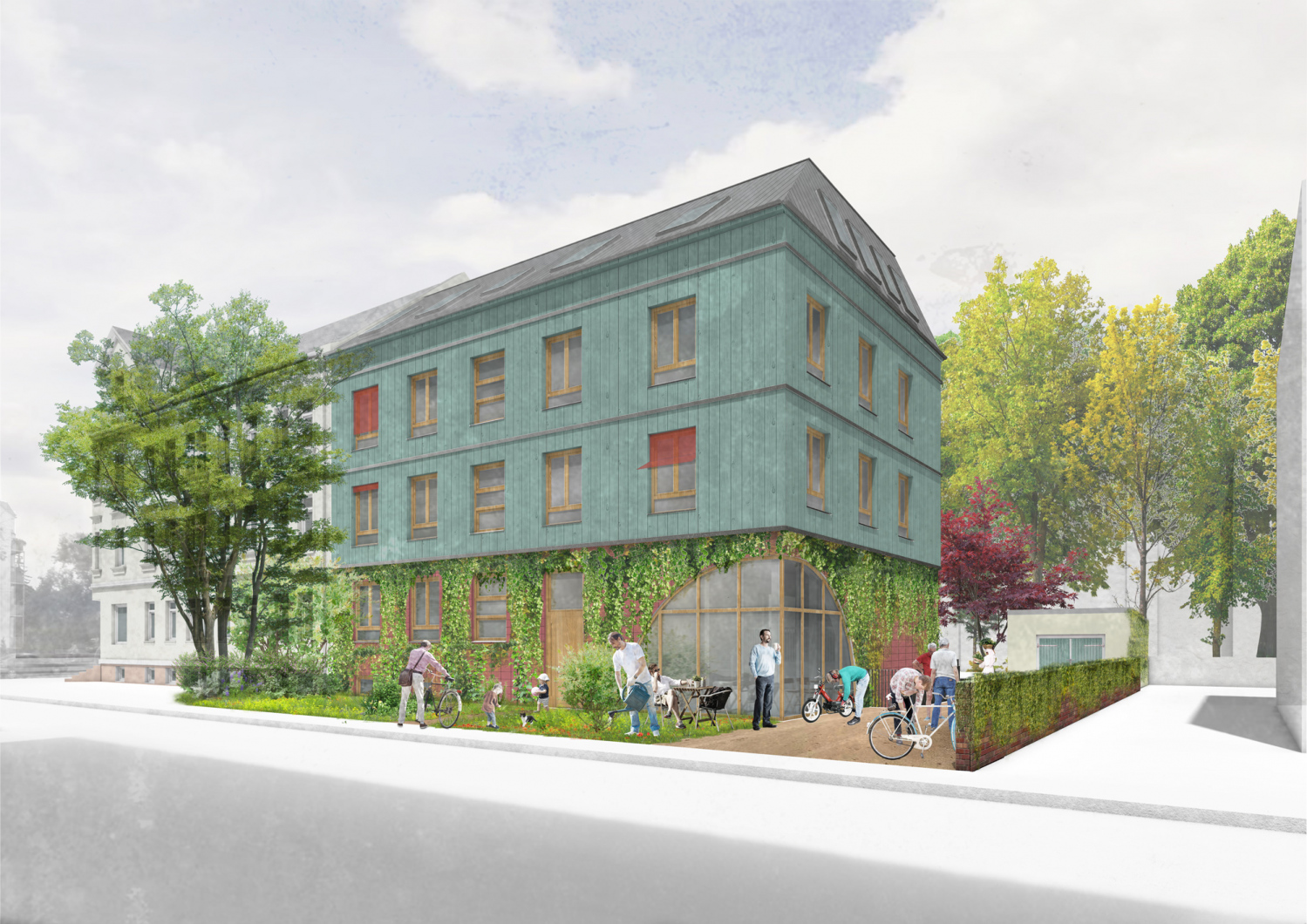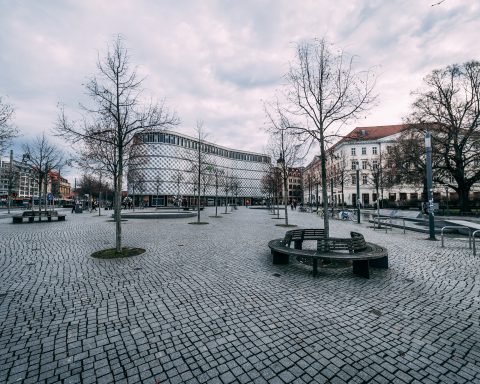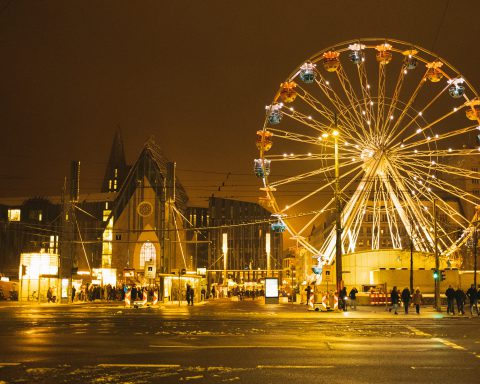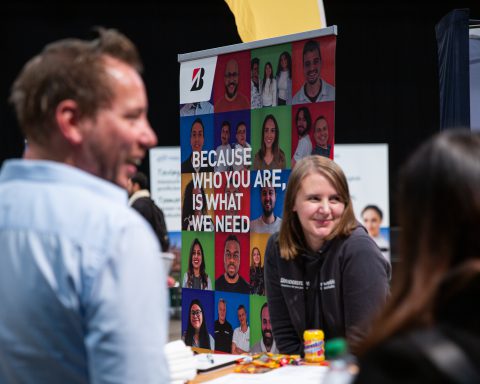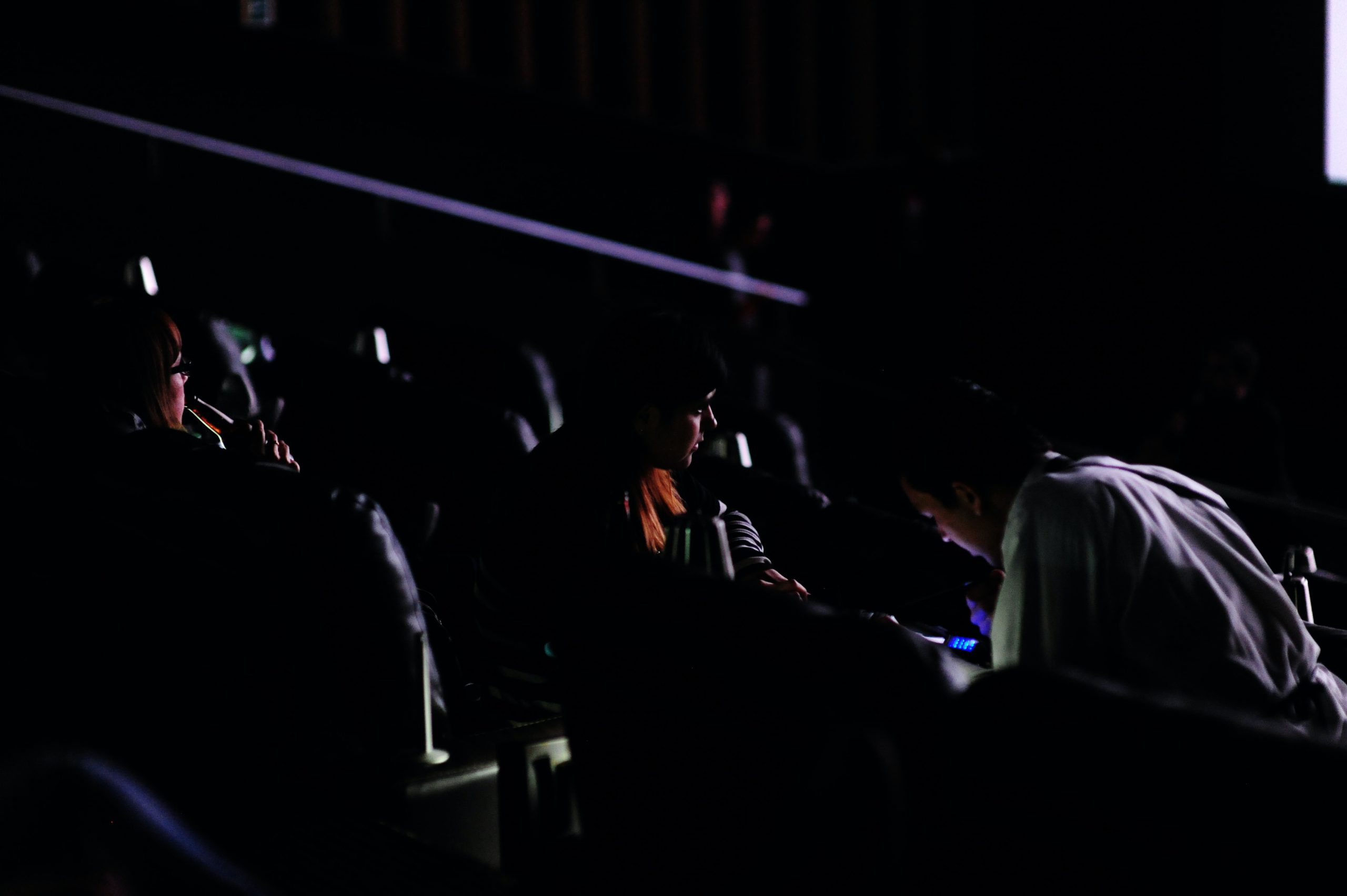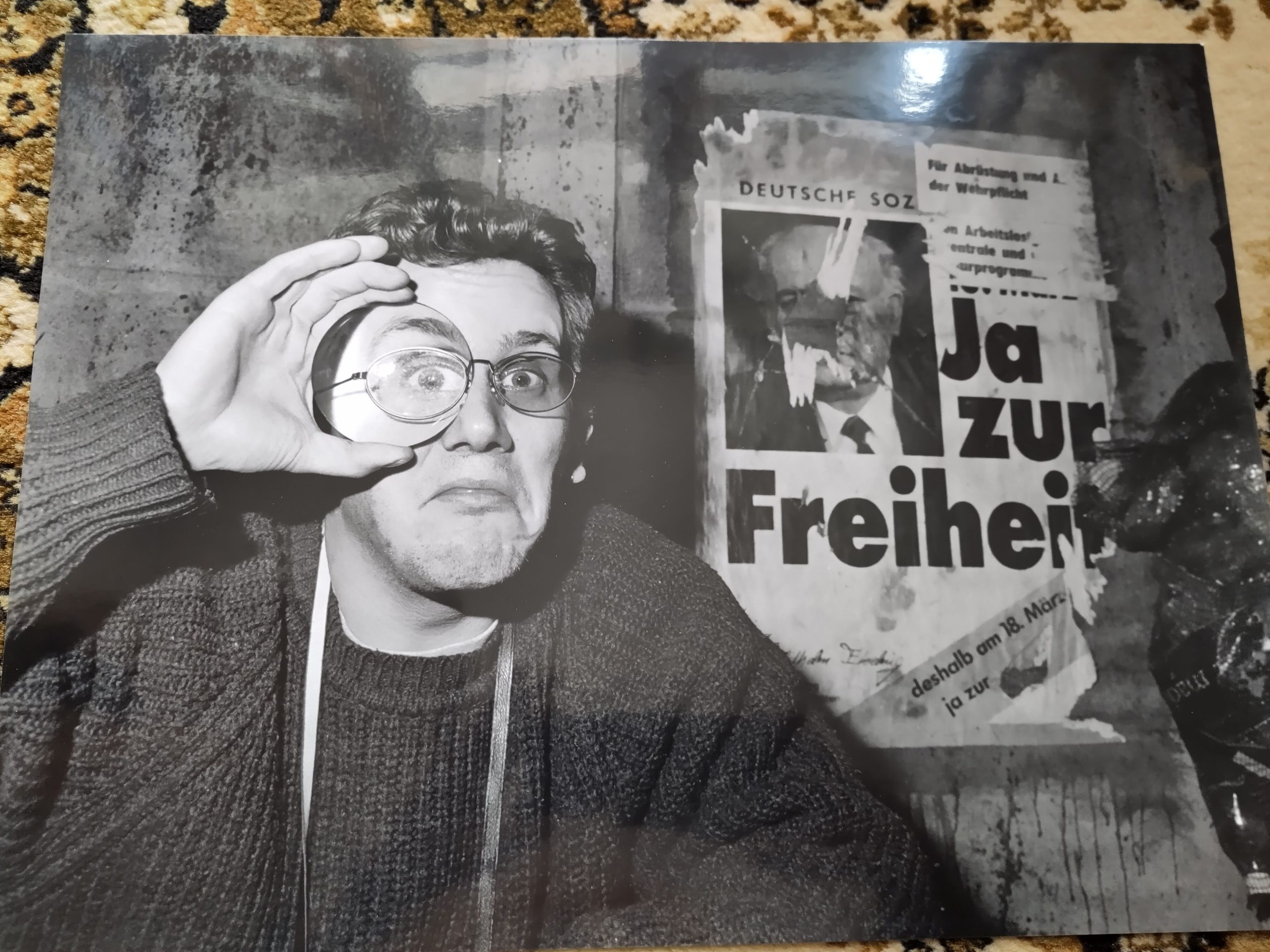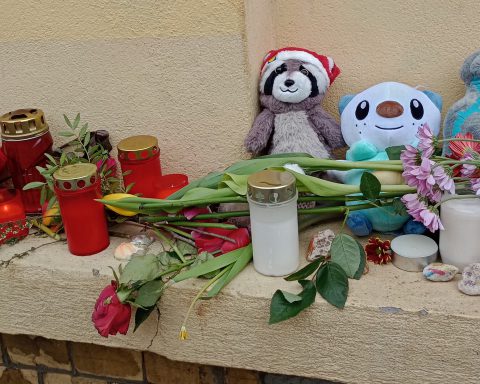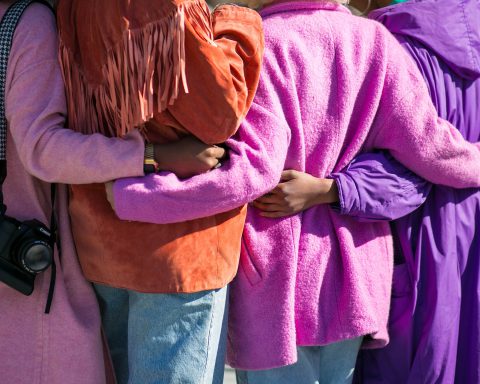This is the story of the “Baumis” of Baumannstrasse in Kleinzschocher, Leipzig.
They are a community of 20 people: 12 adults and 8 kids, 0-61 years old, who live together in an old rented house. Unable to stay there long-term , the Baumis have decided to take matters into their own hands and build a new house. They call this new communal living project “Haus im Fluss.” The arrival of a portable toilet in August on the site in nearby Groβzschocher was a cause for excitement. The turning of the first sod is imminent!
By the way, “Haus im Fluss” does not refer to a river but rather a house in a state of flux, flow or change. Ambitious? Yes. Silly? No. Judith Fallert and Malena Rottwinkel, two of the housemates, convinced me of this as they shared the Baumis’ fascinating story.
What does communal living mean in practice?
For the Baumis, communal living is a way of life that is about sharing and caring for you neighbors. Spaces, facilities and food are shared in a flexible way and the housemates help each other out. Playmates are always on hand for the kids and organising sleepovers and babysitting is no problem. Give-and-take and honesty are important, and the housemates support each other and are emotionally close. Rottwinkel talks warmly of the support she received after having a baby while living at the house.
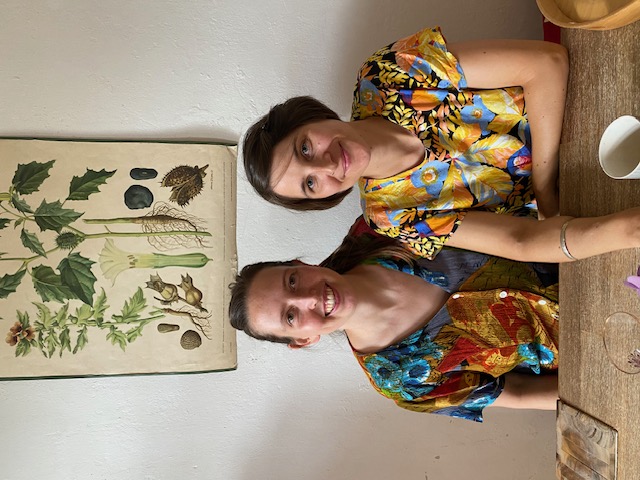
I learned that ideas, skills and knowledge are also exchanged. “It doesn’t feel hard to ask someone for something,” Fallert tells me. “It would be very different if we were just neighbors.”
In terms of professional backgrounds among the housemates, there is an academic tendency, and the humanities feature strongly.
Both women experienced the COVID years in the house, and they tell me it was an “intense and special time.” With a lot of people working from home, the housemates formed their own bubble and gathered daily for lunch. Happily, that tradition has continued. Another tradition is a well-planned and much anticipated annual weekend away.
Recognising that individual circumstances change, the women talk of a “solidarity principle” that operates at the house. This means people contribute what they can afford to pay: rent is negotiated every six months, and each adult pays about €200 a month for food. Fortnightly meetings—along with a key noticeboard—ensure the household runs smoothly. A further weekly meeting is held to discuss the Haus im Fluss project.
“People are really positive here” the women tell me. The housemates take their turn to cook in the two kitchens and household appliances are shared, saving on resources. Even with 20 people, two washing machines are plenty, I’m told. “You only ever have to wait one cycle” Fallert assures me. There’s a cleaning roster, and fortunately, all agree on standards of tidiness and cleanliness. A working bee three times a year also helps keep the place tidy.
The women recognise that conflict is part of living communally, and they embrace the challenge of solving problems and gaining skills in the process. Of course, people regularly come and go from the community.
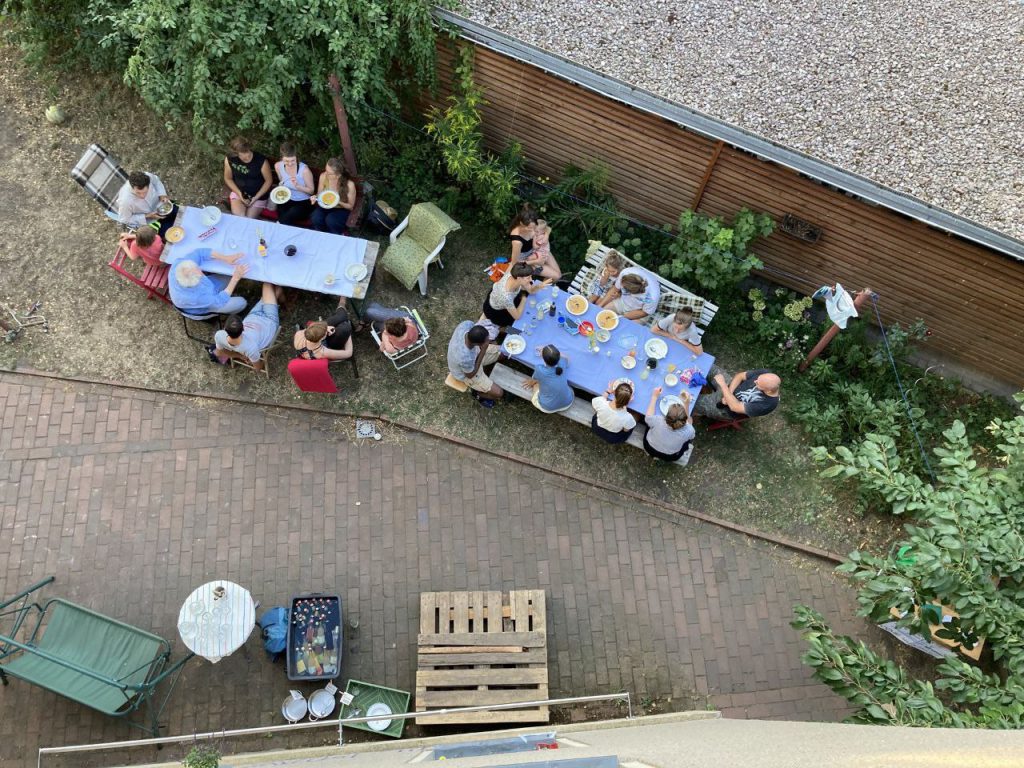
Active in the neighbourhood
Perhaps not surprisingly, the house community is also active in the wider neighbourhood. They have organized concerts and other events in their backyard, including an annual Advent gathering. The house community regularly whips up an evening meal for the wider community for a small donation. It is known as a “Kitchen for everyone” or “Küche für Alle” and in Leipzig the Japanisches Haus also does the same. The socially minded get-togethers provide regular opportunities for interaction with the neighbourhood at large.
Moving on
While the house at 16 Baumann Straβe is the centre of the Baumis world, it is, after all, a rental. And the rent is relatively high for a property that is not exactly a five-star proposition. They have looked at other places to buy throughout the years. Of course, in terms of house prices, the grass was greener 10 years ago, “but we were students back then” adds Rottwinkel.
In recent years, the housemates were looking for longer-term security that a rental couldn’t provide.
They became aware of the City of Leipzig’s urban development initiative to make publicly owned real estate available for the common good. How it works is the department responsible for building and housing sets out a “concept procedure” or Konzeptverfahren, for a particular property that includes a set of individually adapted criteria. Interested parties are invited to provide a concept, which is evaluated against the criteria, and, in short, the successful party lives happily ever after. Sweet as that sounds, the Baumis will tell you, there’s a bit more to it than that . . .
It was back in July 2021 when the group excitedly learned that their ecologically and socially oriented communal living concept for a publicly owned plot of land in neighbouring Groβzschocher had been successful. This means they have secured leasehold on the property for 110 years. Since then, the Baumis have formed a GmbH which will own the house and ultimately prevent the house from being sold for a profit. This, together with the formation of a verein (association) and membership in the Mietshäuser Syndikat (a nationwide association of de-privatized house projects) will essentially run the show.
Meanwhile the Baumis have been working with Octagon Architekturkollektiv to design and manage their Haus im Fluss.
Plans reveal an attractive house with a wooden facade, photovoltaic solar panels on the roof, a heat pump and a green surrounding environment that includes a community garden. Inside there’ll be space for 20 people in a cluster living environment where each person generally has their own room. Communal spaces like kitchens and living rooms can be shared. This results in the saving of space and costs. The idea is to keep the rent at a reasonable level of about €12 per square metre. A multifunctional room in the basement will be able to be rented out and there are also plans for a charging station for an electric vehicle in cooperation with carsharing company TeilAuto.
Financing the project
Speaking of cost, just how do you afford to build a communal apartment building at a cost of about €3 million in 2023? After making the publicly owned land available for lease, the City of Leipzig is providing about a third of the total funds to build the house. This continues its support for new cooperative, affordable and socially inclusive housing projects in Leipzig. The funds are also helping compensate for rising costs due to inflation, the war in Ukraine and related supply chain issues. A mortgage from Umwelt Bank makes up roughly another third of the total and the final third will come from direct loans. These are private funds people have chosen to invest in the project for a small return of about 1.5 percent interest, and fundraising is ongoing.
Rottwinkel and Fallert are convinced that their communal living experience has played an important part in the success to date of the Haus im Fluss project. Their next goal? At the beginning of 2025 gather everyone in the new communal dining area of their completed Haus im Fluss and contemplate their shared journey. Cheers to that!

